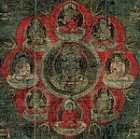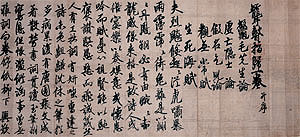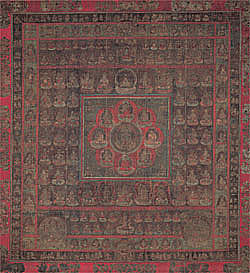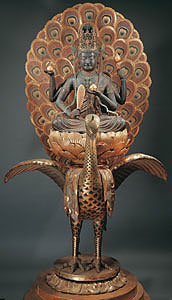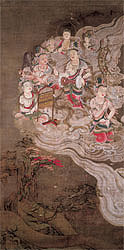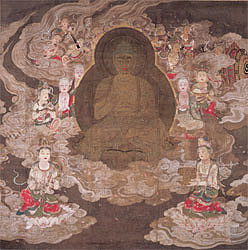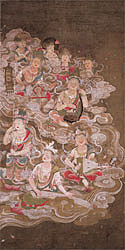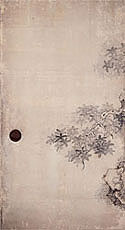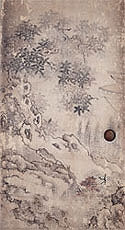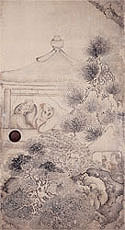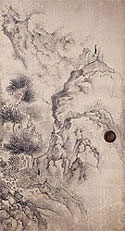| Period |
Tuesday, April 6 - Sunday, March 16, 2004 |
 |
| Venue |
Tokyo National Museum (Ueno Park) |
 |
| Hours |
9:30-17:00; open until 20:00 on Fridays during the exhibition; open until 18:00 on Saturdays, Sundays, and Bank holidays (Last entry is 30 minutes before the closing time.) |
 |
| Closed |
Every Monday (except for May 3) and May 6 |
 |
| Admissions |
Adults: 1300(1100/950)yen
University Students: 900(800/510)yen
High School Students: 800(700/450)yen
Jr. High & Elementary School Students: Free
| * |
Prices shown in ( ) indicate advances discount/ group (more than 20 people) tickets. |
| * |
Ticket price includes admission to regular exhibitions. |
| * |
Persons with disability and one person accompanying them are admitted free of charge.Valid identification requested upon entry. |
| * |
Advance tickets are on sale at the ticked booth of the Museum (during Museum hours), the counters of JR East, Ticket Pia and Lawson Ticket, CN Playguide, JTB, and other major ticket offices until April 5, 2004. |
|
 |
| Access |
10 minutes walk from JR Ueno Station (Park exit) and Uguisudani Station
15 minutes walk from Keisei Ueno Station and Ginza or Hibiya Tokyo Metro Ueno Station. |
 |
| General Inquiries |
Tokyo National Museum |
 |
| TEL. |
+81-3-3822-1111 |
 |
Exhibition Web site
(in Japanese) |
http://www.nhk-p.co.jp/kukai/
The website has closed with the end of the exhibition. |
 |
| Organizers |
Tokyo National Museum, Kongôbuji Headquarters of the Shingon Sect on Mount Kôya, Foundation for the Preservation of Cultural Properties on Mount Kôya, NHK, NHK Promotions Co., Ltd. |
 |
Additional support
provided by |
Agency for Cultural Affairs |
 |
Special sponsorship
provided by |
Nankai Electric Railway |
 |
| Additional sponsorship from |
Nissha Printing Co., Ltd., Mitsui Sumitomo Insurance Co., Ltd., and Artéfactory Inc. |
 |
| Cooperated by |
Nippon Express, JR West, and Celartem Technology Inc. |
 |
Planning Assistance
proviede by |
NHK Kinki Media Plan |
 |

